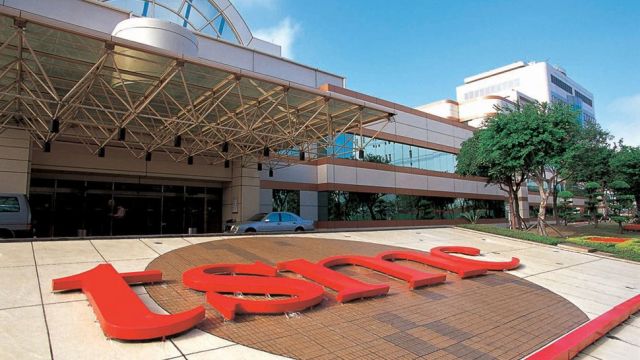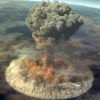The Russian edition of the magazine "Forbes" published the material Katerina Terekhova and Alexey Dertev "Ban on development: how will Russian technologies survive without semiconductors", which states that the refusal of the world's largest semiconductor manufacturer TSMC from cooperation with Russia means that it will be difficult for Russian companies to implement the planned import substitution program in the IT field. The production of Russian-designed chips was carried out just in this Taiwanese company. Processors "Baikal" and "Elbrus" were designed to become an alternative to Intel and AMD, but now their future is unclear. We tell you how it happened and what options the industry has.

(c) TSMC
The fact that the Taiwanese semiconductor manufacturer TSMC is preparing to join international sanctions against the Russian technology sector became known on February 25, by February 27, the Taiwanese Central News Agency, citing its sources, reported that TSMC had already suspended supplies to Russia, and also stopped production of Baikal and Elbrus semiconductors developed in Russia.
The Taiwanese company joined the decision of the Biden administration, which announced on February 24 that it would stop more than half of high-tech imports to Russia. The sanctions also affected the field of semiconductors, on which the development of the Internet of Things, telecommunications networks, the production of smartphones, as well as meeting the growing needs for computing power depend. TSMC explained that it made this decision within the framework of international export agreements. Most likely, we are talking about the Export Control Reform Law (ECRA), adopted in 2018 by the US Congress to protect its own technologies and combat the "Made in China 2025" plan. The new rules stipulate that even those goods that are manufactured outside the United States, but contain American technologies and components, fall under sanctions.
These restrictions will hit the Russian industry quite hard, while the consequences for Intel, AMD and TSMC will be insignificant, analysts say, since Russia's share in global sales of microchips is 0.1%.
In Taiwan, the company's decision to impose sanctions was criticized by the opposition Kuomintang Party. Party spokeswoman Li Guimin noted that Taiwan has limited natural resources, and Russia supplies gas to the island. "Do officials understand the situation? Do you have the money to play such games?" Li Guimin voiced her questions.
Background of the issue
The threat of stopping the supply of microelectronics is not new for Russia. Back in 2013, the US State Department began to impose a ban on the supply of certain elements for the Russian space industry, the reason for this then was that they could be used for military purposes. It was from this moment that attempts to ensure import substitution intensified. In subsequent years, export restrictions expanded to dual-use technologies, and now they will affect completely "civilian" industries.
The prospect of technological isolation of Russia stimulated the country to actively engage in import substitution and invest in the development of domestic microelectronics. However, due to technical limitations and complexity of the process, the Russian companies Baikal, MCST, Yadro and STC Module only designed the chips, and the task of production was transferred to the world's largest manufacturer, Taiwan TSMC (Taiwan Semiconductor Manufacturing Co.). Representatives of Russian companies refuse to comment, claiming that they have not received official notifications from TSMC. In May last year, the general director of Baikal Electronics, Andrey Evdokimov, said that the ban on the import of advanced semiconductor models would not have critical consequences for Russia, since there would be enough domestic processors for the basic needs of the state. However, at that time there was no talk at all about the likely termination of cooperation with TSMC, and no one has yet reported on the appearance of their own production of microchips from Russian companies.
Before the sanctions were imposed, domestic processor developers - MCST (Elbrus processors), Baikal Electronics (Baikal processors) - relied on TSMC's production forces. At the end of July 2021, the microelectronic design center Malt System, created at Moscow State University in 2011, and Yadro became partners of the tech giant.
It was planned that TSMC would supply Baikal-M consumer processors and Baikal-S server CPUs. Yadro, a Russian manufacturer of servers and data storage systems, specially created a subsidiary company "Core Microprocessors" in early 2021, intending to design advanced chips and order their production in Taiwan.
The Irreplaceable TSMC
TSMC occupies more than half of the semiconductor market, and its value is estimated at $550 billion. The Taiwanese tech giant supplies products to the most important players in the technology industry (Apple, Intel, Qualcomm, AMD and Nvidia) and produces up to 92% of high-tech chips. Now the company is mastering the production of chips using a 3 nm process and is preparing to work on 2 nm semiconductors (reducing the size of the semiconductor increases the speed and energy intensity of computing, which is most important for computers and smartphones), while in Russia the Micron company has reached a technological level of only 65 nm.
Under the conditions of sanctions, Russia can still buy chips from China, however, given the global shortage of microelectronics, China will be able to supply only relatively low-class chips to Russia in the near future, so the queue for advanced products is from 20 to 52 weeks. The suspension of cooperation with the Taiwanese manufacturer will slow down the development of the domestic industry. In addition, most alternative suppliers somehow use American technologies in production, which will force factories to refuse Russian companies to conclude contracts.
Even if Russia wants to manufacture advanced microchips on its territory under sanctions, this process will probably take decades. Even the United States, which is afraid of export dependence on key technologies, cannot yet effectively transfer the assembly lines of advanced processors to its territory, as this can lead to a drop in quality due to a complex multi-stage production system (the latter reaches 1,500 steps), writes The Time.
Despite the desire of Russian officials to buy high-tech products in China, Chinese manufacturers will not be able to quickly rebuild the chains and promptly start supplying the Russian defense industry. In China, as in the United States, dependence on imported chips has long been considered a serious threat to national security, and over the past five years the country has made great progress in import substitution and the development of its own products.
Nevertheless, the potential of the Chinese industry itself remains low compared to the American one, since most of the advanced solutions and technologies for the production of microelectronics are under the export control of the United States, which significantly limits the pace of development of the national industry of the People's Republic of China. Thanks to government support and incentives, China's high-tech industry is growing at a rapid pace, but the country's global share in chip exports remains insignificant. But the restrictions imposed on Russia in order to block its access to the global high-tech market will further accelerate China's desire for independence in the semiconductor industry, as Chinese experts are already saying.
Sinologist Leonid Kovachich believes that in the current situation, China can hardly help Russia fill the emerging technological gap. "China's own technological reserves are not enough to provide Russia with an adequate alternative to TSMC semiconductors," he says. - In addition, there is a risk for China to fall under secondary US sanctions if Chinese companies or financial institutions help minimize the consequences of US sanctions against Russia. Since the Russian market has a much smaller scale compared to the American and European, it may become too toxic for many Chinese companies. At best, China can contribute to the production of microelectronics, since the Russian radioelectronic industry is in decline. Nevertheless, we are not talking about advanced semiconductor technologies here anyway."
What does it threaten
The termination of the production of "Elbrus" will primarily hit the defense industry, as processors are positioned as a reliable alternative for government agencies where increased information security is required. Kostas Tigkos, an analyst at Janes, a supplier of British intelligence, said in an interview with the Washington Post that the consequences of TSMC's refusal to produce chips for the Russian army would be "devastating."
When US sanctions forced the Russian defense industry to look for alternative supplies in 2013, China and Taiwan became such an alternative. Now Taiwan has also imposed sanctions, so now supplies from China, primarily the largest Chinese manufacturer Semiconductor Manufacturing International Corp (SMIC), will turn out to be an alternative solution. Vasily Kashin, director of the HSE Center for Comprehensive European and International Studies, a specialist in the Chinese military-industrial complex, notes that under the current conditions, Chinese microchip manufacturers, themselves under sanctions, will become natural partners of Russia. "Even if, technically, Chinese manufacturers are still somewhat behind the advanced world level, their capabilities may be quite adequate for the needs of Russia," he says.
SMIC is unlikely to refuse Russian companies to place orders at their production facilities for political reasons, but things are not so simple with a Chinese company. Although SMIC itself has been under sanctions since 2020, a number of American companies, such as Lam Research, Entegris Inc., Qualcomm Inc. and Applied Materials Inc., with the permission of the US Bureau of Industry and Security, cooperate with the Chinese manufacturer and provide it with technologies for the manufacture of microelectronics. That is, if desired, the United States can prohibit SMIC from supplying components to Russia.
The lists of chips to be replaced by purchase in China are now classified. It is possible to estimate the scale of the problem that the Russian industry will face only in general terms. Thus, import substitution efforts since 2014 have partially been crowned with success, although they had to be paid for by a decrease in the volume of high-tech exports (primarily defense).
The most sensitive will be the ban on the supply of semiconductors for the Russian space industry. According to the head of the Roscosmos state Corporation Dmitry Rogozin, in 2021, previous Western sanctions have already led to the forced postponement of launches. It is quite obvious that the situation will worsen in 2022.
Export restrictions may also affect the development of civil aviation in Russia, probably calling into question the success of the production programs of Russian passenger aircraft Sukhoi Superjet 100 and MS-21. If earlier the supply of Western electronics for Russian civil aircraft was a big question, then in the light of the current sanctions, cooperation in the field of civil aviation with the United States and EU countries looks unrealistic.
According to Eduard Voitenko, managing director of the GR agency Baikal Communications Group, in conditions of shortage of microchips, a significant increase in gray supplies can be expected: "Against the background of sanctions, counterfeit foreign processors may appear on the market under the guise of Russian ones, and this trend may blur the achievement of goals in real import substitution."
In general, the consequences of sanctions will be felt where the use of the most advanced technologies is required, for example, in supercomputers. In these cases, Russia will be forced to look for ways to acquire modern chips bypassing sanctions through intermediaries, Leonid Kovachich says. "The prospects for the development of digitalization and telecommunications in the Russian Federation have been reset," the expert believes.
However, government agencies (primarily law enforcement agencies) mainly rely on chips of older generations, which Russia can partially produce itself and purchase from other countries. In any case, for now China, which itself is suffering from US sanctions, will be interested in this.





